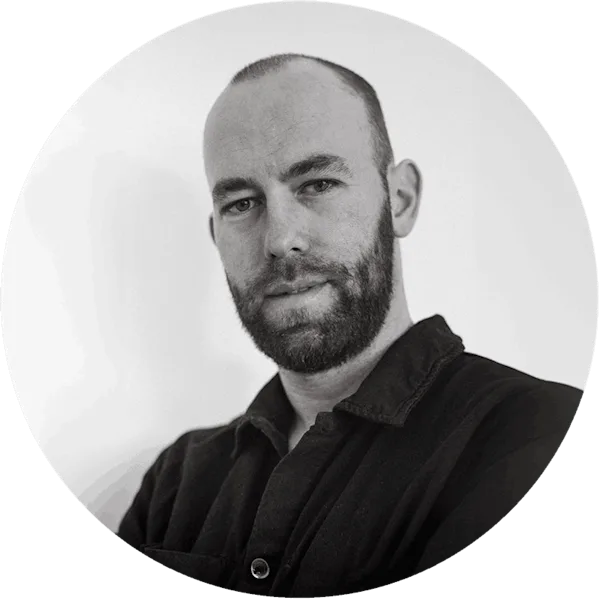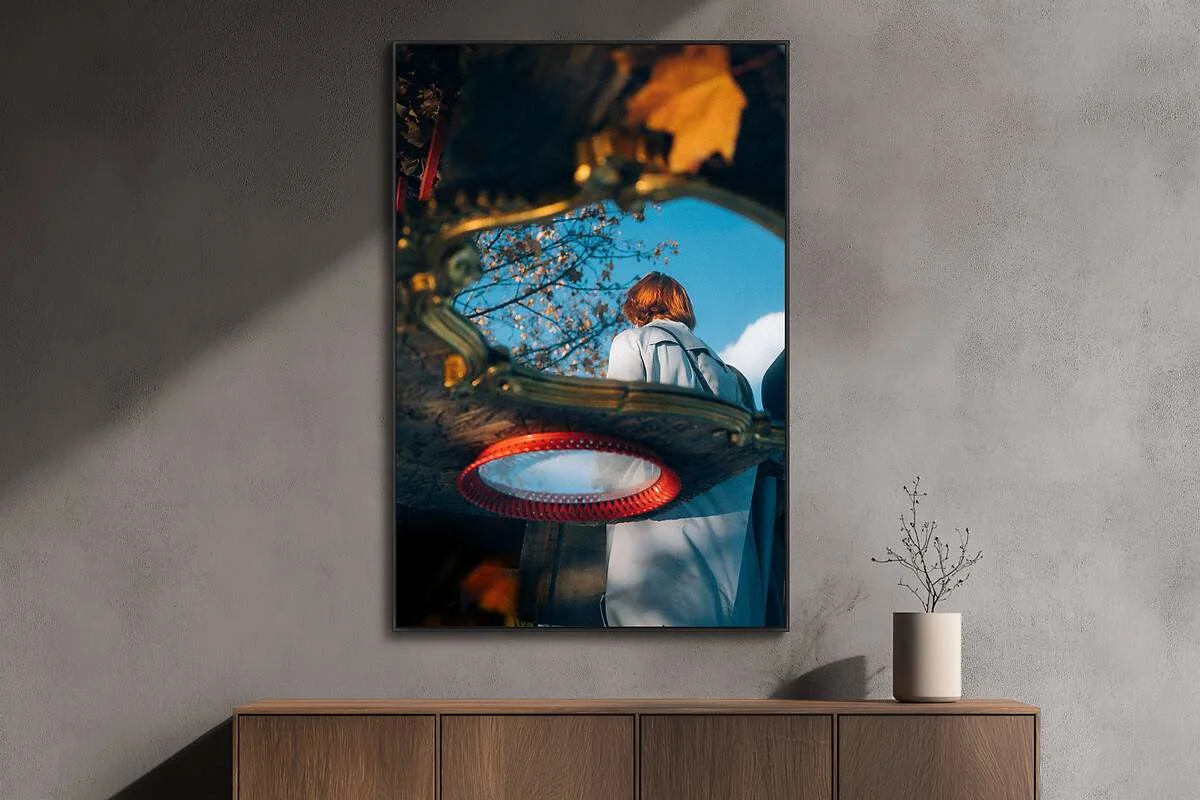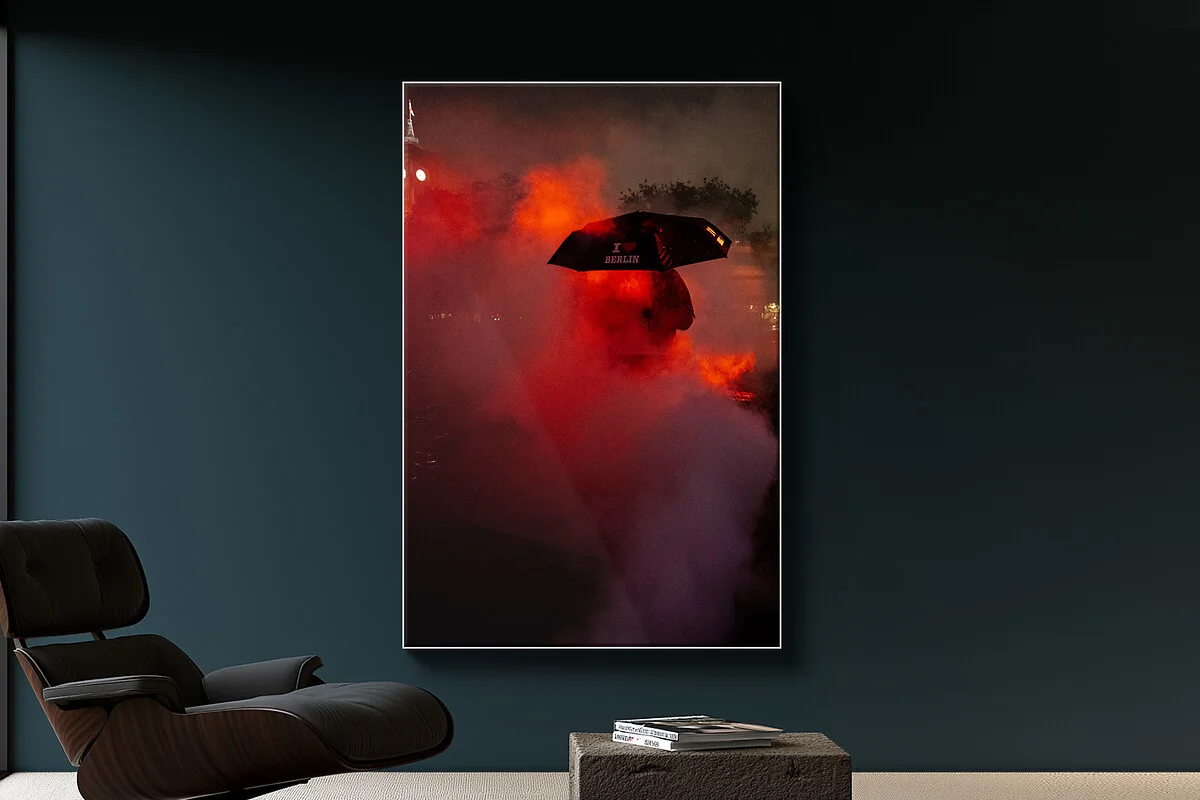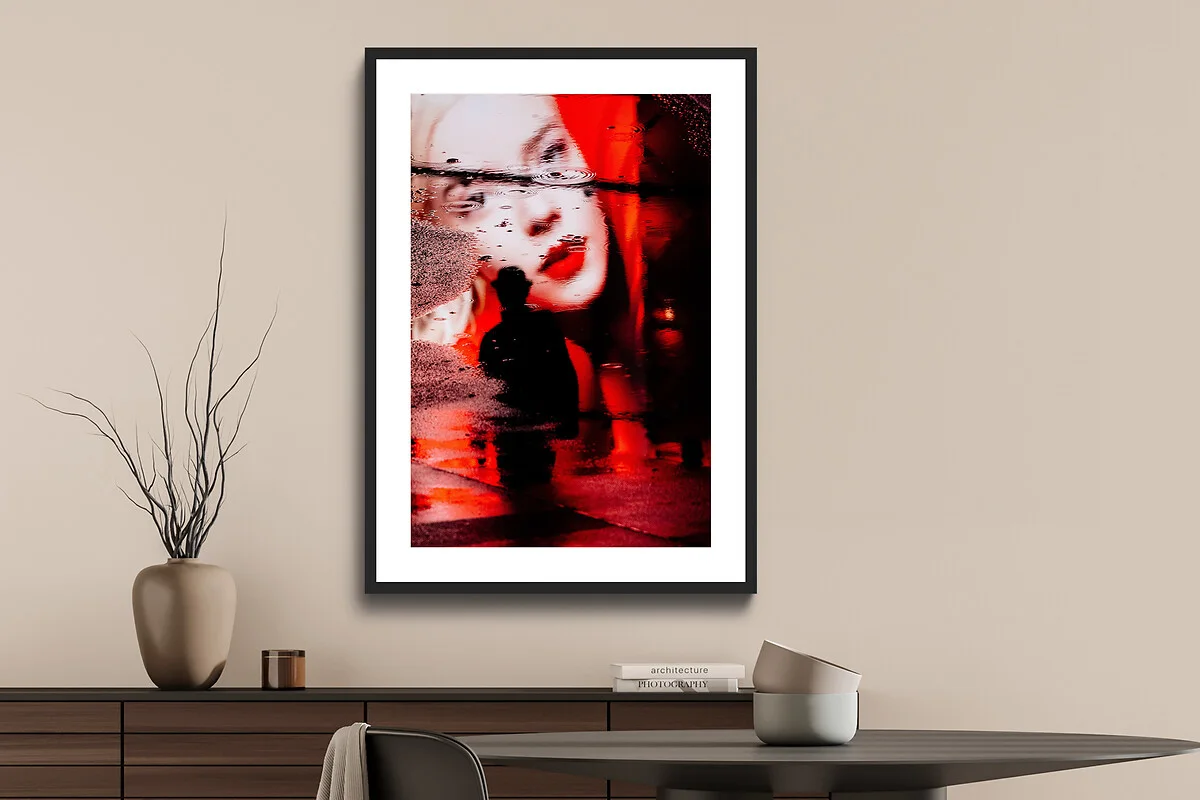Faces in the Rain – Interview with Maximilian Streich
Maximilian Streich
After graduating from high school, Maximilian Streich saved up for his first Nikon D5000 and began experimenting with photography. While studying communication sciences in Berlin, he discovered urban diversity as a source of inspiration, and stays in London and Sydney further sharpened his eye for composition, light, and architecture.
Today, he lives in Berlin, is a Nikon ambassador, and shares his vision of street photography as a speaker and author. His work is published in renowned magazines and exhibited internationally. In this interview, he explains why urban life fascinates him, how rain inspires his creativity, and encourages aspiring photographers: “Don’t wait for the perfect subject – go out again and again, even in bad light or weather.”

Interview with Maximilian Streich
Can you tell us a little bit about how you became a photographer? And tell us something about your pictures.
My photographic journey began more or less as a self-taught process. After graduating from high school, I bought my first DSLR camera, a Nikon D5000, with my savings and initially experimented with landscape photography. But the real spark came when I moved to Berlin to study communication sciences. The dynamics of urban life and the multicultural atmosphere of the city fascinated me and made me change my perspective. I started photographing architecture and increasingly incorporating people and details into my compositions. At first, people were more of an accessory in wide-angle shots, but over the years I worked my way from "big to small" until people and specific details became the central elements of my images. In my photographic work, I have evolved from wide-angle shots at the beginning to more close-up shots of scenes in recent years. I try to focus on details in scenes, abstract motifs more strongly, and play with layers.
My images are often characterized by strong colors. For me, color is a powerful tool, not only aesthetically, but also for telling stories and conveying emotions. I also play a lot with light, shadows, reflections, and surface structures. I try to stage everyday life in such a way that it appears new and unfamiliar, challenging the viewer to take a closer look. I want to show the world as I perceive it, a symbiosis of the familiar and the extraordinary.
What fascinates you about the city in "bad" weather – what do you discover when others prefer to stay indoors?

Photo: Maximilian Streich - The 10 mm-deep ArtBox in black aluminum not only highlights the darker tones of the motif but also gives the photo print on aluminum Dibond a striking spatial effect with a contemporary design character.
For me, "bad" weather is actually "good" weather for photography! It changes the city in ways that are not visible in sunshine. Water – whether rain, puddles, or condensation on windows – is a central element in my work. It offers incredible opportunities for abstraction and reflection. A rain-wet sidewalk turns into a giant mirror that reflects the lights of the city and the colors of the sky in a unique way. Raindrops on windows create beautiful patterns and distortions that open up a whole new perspective on the world. While others seek shelter, I am outside discovering these fleeting, often overlooked moments of beauty and the interplay of elements that only arise in such conditions. It is a way of transforming the ordinary into something extraordinary.
I first experimented with photography in the rain in 2012 and was a little worried about my camera at the time. However, I was fascinated by the special mood of light and colors that street photography in the rain conveys, and I started taking photos under these conditions more and more often. Bad weather became a central stylistic element in my pictures. Rain, snow, and fog give even familiar postcard motifs of cities a whole new mood and inspire my creativity. Rain, for example, helps a lot because it creates reflections everywhere.
Is there a picture (in our selection) that means a lot to you or tells a special story?
My series "The Liquid Faces Series" is particularly close to my heart at the moment. It combines many of the visual elements that make up my portfolio: the harmonious, vibrant colors, the abstract reflections, and the use of water as an organic canvas. For me, each image in this series tells a story of chance and deliberate observation. It's fascinating how faces or figures emerge through reflections in wet surfaces and exist for only a fraction of a second before changing again. This series is a profound immersion into the abstraction of everyday life and the transience of the moment.
What inspires you?

Photo: Maximilian Streich - The white Slimline frame creates a minimalist yet clear visual boundary around the night motif. Acrylic glass adds depth and dimension.
My inspiration comes from many directions. On the one hand, there are the masters of early street photography such as Saul Leiter, Ernst Haas, and Fred Herzog. Their ability to capture the authenticity of everyday life, the subtle interplay of colors, and the essence of urban landscapes has had a profound influence on me. Their work has taught me how to find poetry in the everyday and reveal hidden beauty.
On the other hand, contemporary photographers such as Christophe Jarcot and Craig Whitehead are a great source of inspiration. Their innovative storytelling and ability to reinterpret scenes in fresh and new ways broaden my horizons. They show me how visual narratives are evolving in the modern world, and I incorporate some of their techniques to further develop my own work.
But aside from specific role models, I am most inspired by the flow state I achieve when taking photographs. When I'm out and about with my camera, my perception slows down and I am completely in the moment. This intense focus on details and scenes, detached from everyday thoughts, is incredibly satisfying and inspiring.
How do you find new perspectives in a city you already know so well?
I rarely set out with a fixed idea of a particular image. Instead, I try to explore my surroundings as openly as possible. I often move within a relatively small radius in places I know well, but then I rely on my trained selective perception. This means I specifically look for visual triggers: unusual color schemes, exciting surface structures, reflections in glass, water, or metal. These triggers help me quickly recognize promising scenes.
Sometimes it also helps to consciously let go of the familiar. For example, motifs such as umbrellas or hats, which I used to use a lot, have perhaps become somewhat clichéd today. That's why it's refreshing to experiment with new techniques, whether through long exposures, unconventional image details, or extreme close-ups. This forces me to see things differently and break out of the comfort zone of my usual perspectives.
Which project or city is next on your list – and why?

Photo: Maximilian Streich - Hahnemühle Photo Rag Bright White, with its soft felt texture and high whiteness, ensures crisp contrasts and brilliant colors. The black “Hamburg” passe-partout frame adds a classic, elegant touch to the series.
Tokyo is currently at the top of my list. I've never been to Asia before, and that alone makes the trip particularly exciting for me. But what appeals to me most is the incredible visual density of this city – the juxtaposition of tradition and future, of narrow alleys and huge neon signs, of silence and overstimulation. Tokyo offers endless possibilities for street photography: exciting lighting conditions, unusual perspectives, interesting people, and an aesthetic that I don't know from Europe. I believe that this sensory overload will challenge me photographically and inspire me at the same time.
What three key lessons would you give to young photographers who want to develop their own distinctive visual language?
Take photos regularly. Don't wait for the perfect subject – go out again and again, even in bad light or weather. That's when the most exciting pictures are often taken.
Take your time to find your style. This requires experience, setbacks, and many failed pictures. It's important to be honest with yourself: What really moves me? What interests me visually?
Just start. You don't have to photograph people or take spectacular street shots right away. Often, the power lies in the quiet, the unspectacular. Observe. And develop your own way of seeing from that.
What else should we know about you?
Maximilian Streich, born in Hanover in 1990 and based in Berlin since 2010, discovered his passion for photography as a self-taught photographer. After graduating from high school, he saved up for a Nikon D5000, with which he ventured into his first experiments. His studies in communication sciences in Berlin opened up new perspectives on urban life, while stays in London and Sydney sharpened his eye for composition, light, and architecture. Initially, he mainly documented architecture, with people appearing only as accessories. Soon, however, they became the main actors in his visual world, giving his photography a deeper emotional dimension. His work has appeared in renowned national and international magazines and has been presented in solo and group exhibitions. Since 2018, Maximilian has been collaborating as a Nikon ambassador in a variety of campaigns. As a speaker and author, Maximilian provides insights into modern street photography. His visual language is characterized by vibrant colors, exciting reflections, and harmonious relationships between image elements.
WhiteWall Product Recommendations
You might also like these articles:
Submitted by WhiteWall Team
Body, water, and light – Interview with Michalis Goumas
Greek artist Michalis Goumas combines painting and photography to create a visual language full of tranquility, balance, and emotion. In his series Summer Renaissance, he captures the fragile beauty of the body, the depth of the sea, and the subtle nuances of the moment.
Submitted by WhiteWall Team
Like stills from a film noir with Hugo Lee
From a young age, Hugo Lee was enchanted by the power of cinema. In the interview, he talks about what a former boss's austerity measures have to do with his photography career, which film directors inspire him the most, and what his first camera was.
Submitted by WhiteWall Team
Distorted realities with Aleksandr Babarikin
With his street photographs taken in New York, Belarusian photographer Aleksandr Babarikin creates a space in which the viewer can immerse themselves and find their own interpretations. With long exposure times, dynamic camera movements, blurring, distortions and reflections, he conveys an abstract impression of the world around him in captivating shapes and colors.








